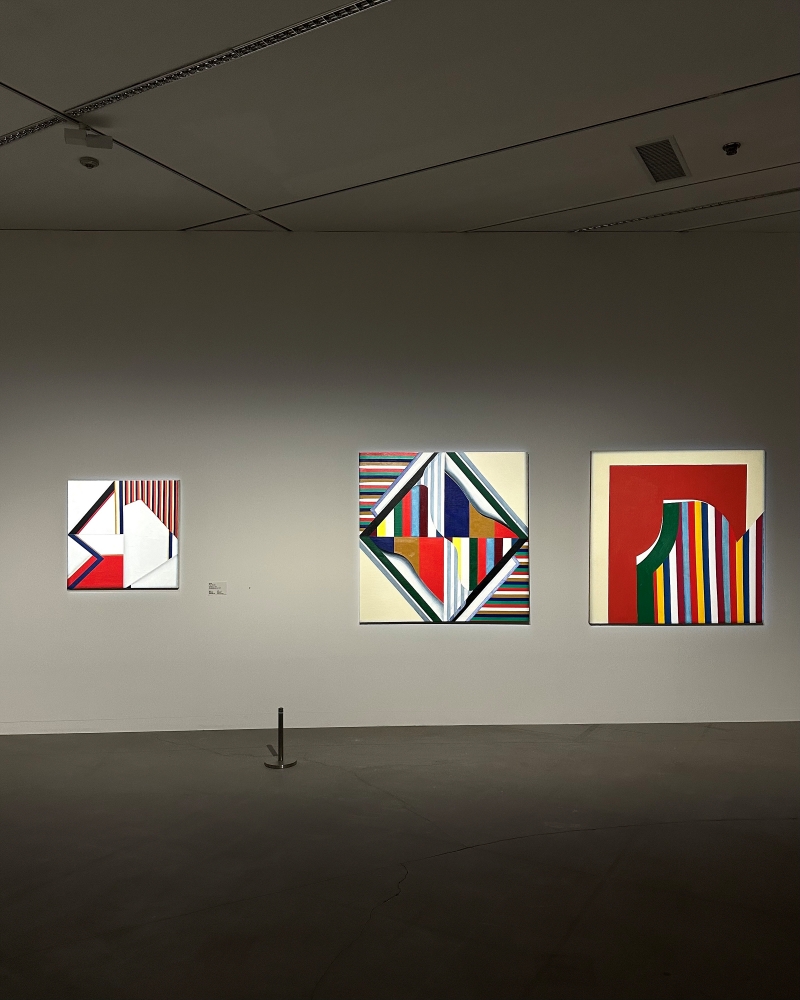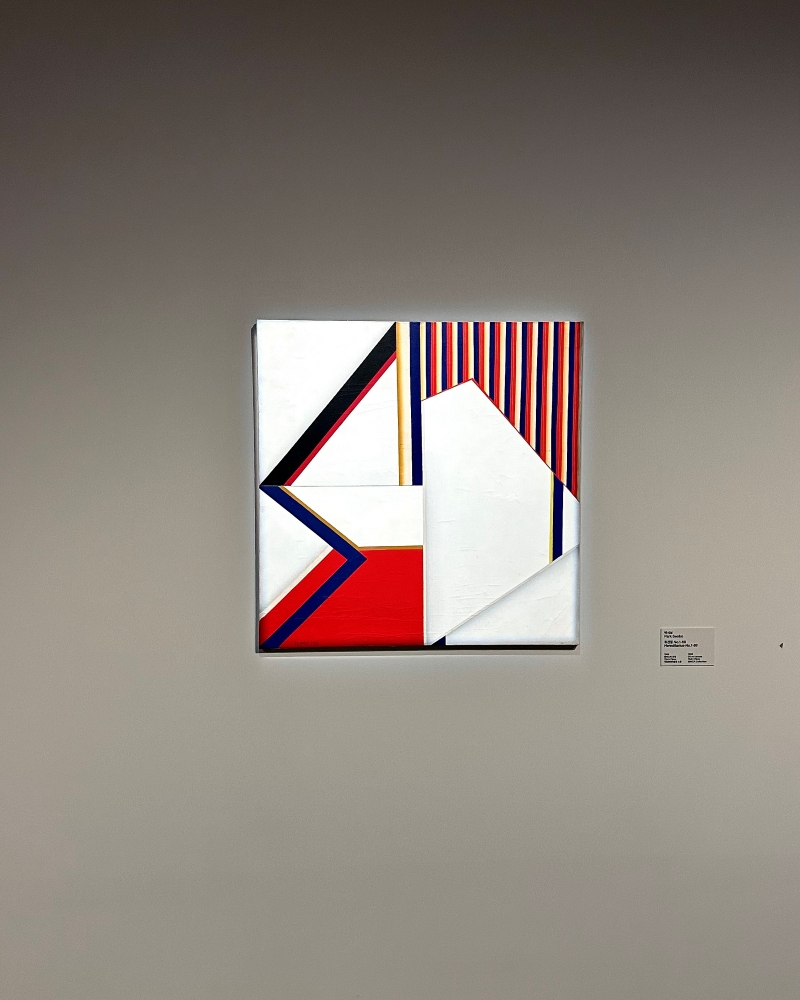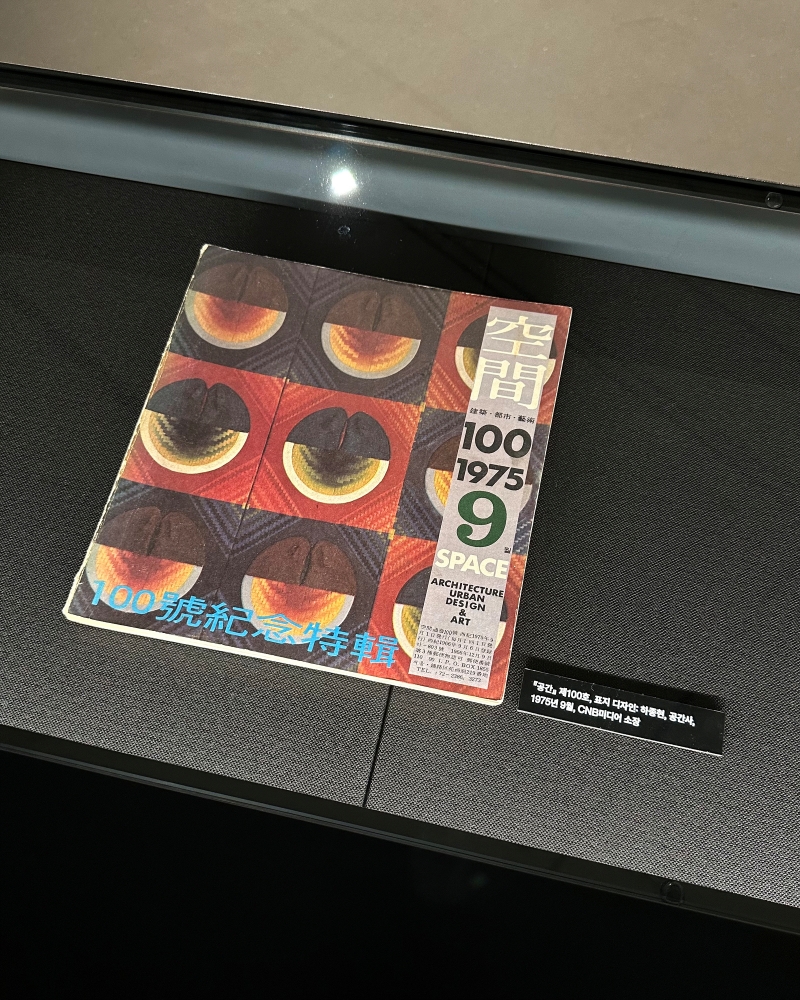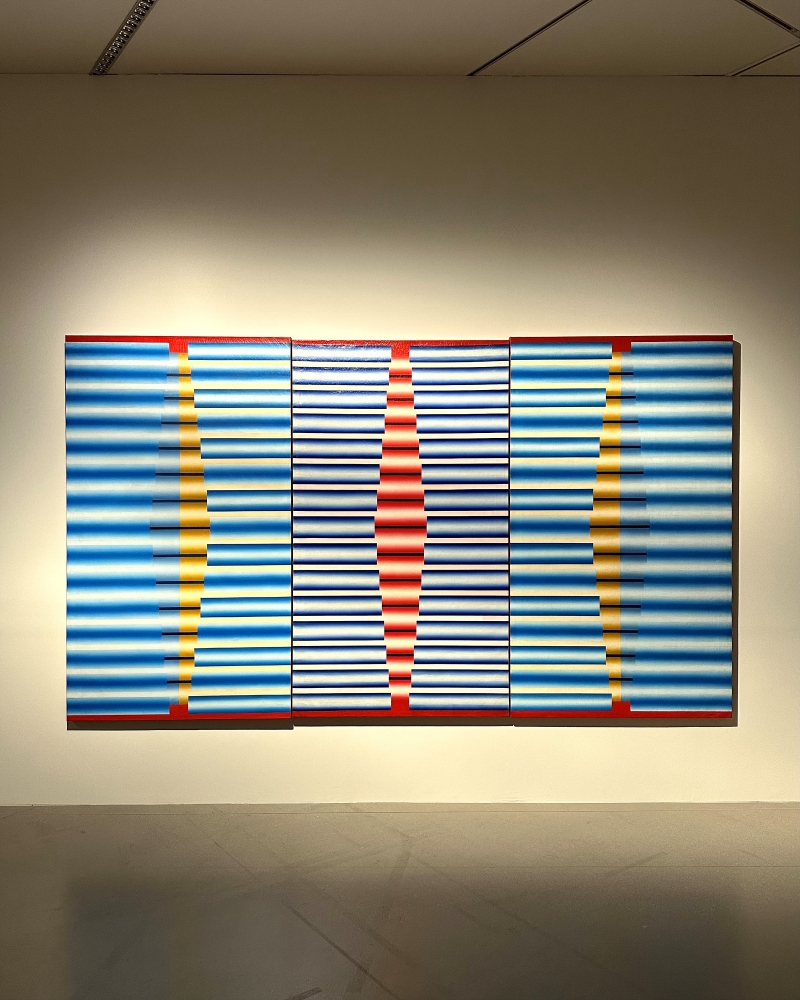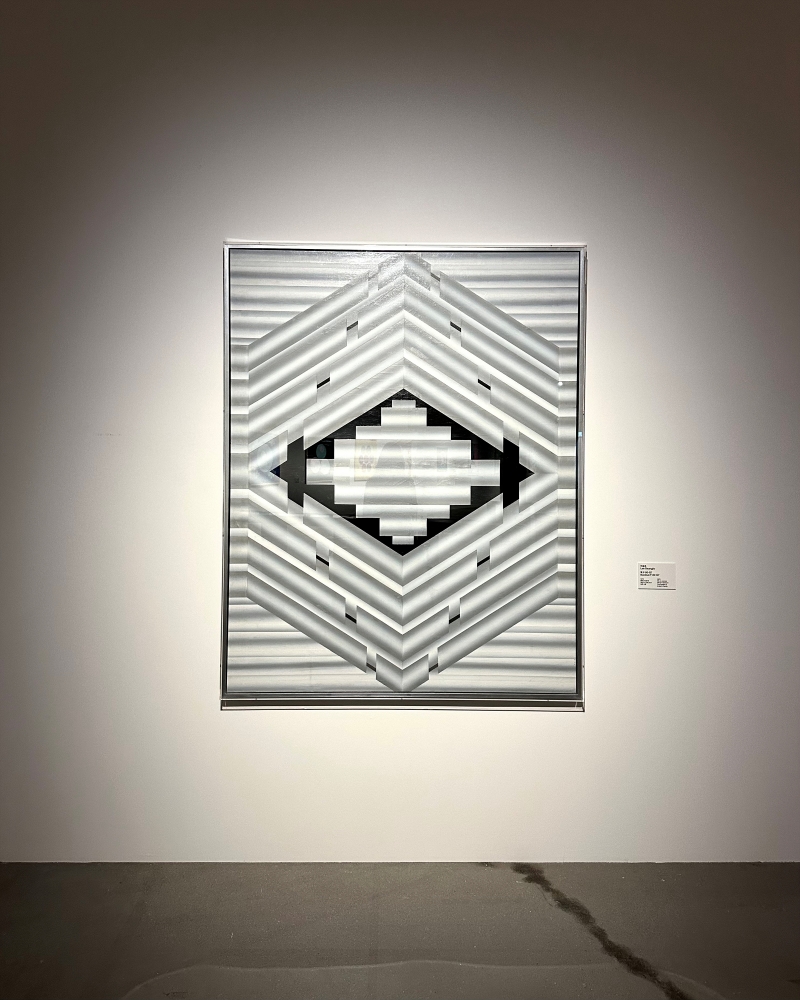News
December 2023
Works by Park Seo-Bo, Ha Chong-Hyun and Lee Seung Jio Presented in the Group Exhibition Geometric Abstraction in Korean Art at the National Museum of Modern and Contemporary Art, Gwacheon, Korea
Artists: 박서보(Park Seo-Bo), 하종현(Ha Chong-Hyun), 이승조(Lee Seung Jio)
Exhibition Dates: November 16, 2023 – May 19, 2024
Exhibition Venue: 국립현대미술관 과천 National Museum of Modern and Contemporary Art, Gwacheon, Korea
Website: https://www.mmca.go.kr/eng/exhibitions/exhibitionsDetail.do?exhFlag=1&exhId=202310100001699
Exhibition Dates: November 16, 2023 – May 19, 2024
Exhibition Venue: 국립현대미술관 과천 National Museum of Modern and Contemporary Art, Gwacheon, Korea
Website: https://www.mmca.go.kr/eng/exhibitions/exhibitionsDetail.do?exhFlag=1&exhId=202310100001699
Significant works by Park Seo-Bo, Ha Chong-Hyun, and Lee Seung Jio are currently being showcased as part of Geometric Abstraction in Korean Art at the National Museum of Modern and Contemporary Art, Gwacheon. Bringing together works by more than 40 artists, the exhibition traces the history of geometric abstraction in Korea, with a particular focus on the period from the 1920s to the 1970s.
The exhibition highlights geometric abstraction as a unique product reflecting the social and historical conditions of its respective era. Emphasizing the movement's connection with architecture and design, the exhibition illustrates geometric abstraction’s pivotal role in expanding the scope of Korean art in tandem with the sociopolitical changes of the time. By doing so, the show reexamines the movement in a new light, challenging its previous standing as mere decorative art with no roots in Korean culture.
Works by Park Seo-Bo, Ha Chong-Hyun, and Lee Seung Jio are presented in the fourth section of the show titled “The Era of Geometric Abstraction.” Displayed side by side, works by Park and Ha showcase the artists' interest in architectural structures, influenced by the geometrically designed cities and buildings emerging from Seoul's urban development projects that began in 1965. Three works from Park’s Hereditarius series reflect the artist’s exploration of geometric abstraction using the traditional Korean five-color palette, while two works from Ha’s Urban Planning series visualize the well-defined layout of a city, reflecting the influence of urban modernization on Korean geometric abstraction.
Meanwhile, Lee Seung Jio’s Nucleus G-999 (1970), a large-scale painting featuring vibrant pipe motifs, represents the artist's response to the rapid urbanization and industrialization of Korean society at the time. The successful moon landing of Apollo 11 in 1969 sparked intense interest in space development and technological advancement among contemporary artists. Conveying a palpable sense of speed, the repetition of metal pipes in Lee’s painting reflects the artist's attempt to connect the advent of the space age with his abstractions.
Geometric Abstraction in Korean Art continues until May 19, 2024.
The exhibition highlights geometric abstraction as a unique product reflecting the social and historical conditions of its respective era. Emphasizing the movement's connection with architecture and design, the exhibition illustrates geometric abstraction’s pivotal role in expanding the scope of Korean art in tandem with the sociopolitical changes of the time. By doing so, the show reexamines the movement in a new light, challenging its previous standing as mere decorative art with no roots in Korean culture.
Works by Park Seo-Bo, Ha Chong-Hyun, and Lee Seung Jio are presented in the fourth section of the show titled “The Era of Geometric Abstraction.” Displayed side by side, works by Park and Ha showcase the artists' interest in architectural structures, influenced by the geometrically designed cities and buildings emerging from Seoul's urban development projects that began in 1965. Three works from Park’s Hereditarius series reflect the artist’s exploration of geometric abstraction using the traditional Korean five-color palette, while two works from Ha’s Urban Planning series visualize the well-defined layout of a city, reflecting the influence of urban modernization on Korean geometric abstraction.
Meanwhile, Lee Seung Jio’s Nucleus G-999 (1970), a large-scale painting featuring vibrant pipe motifs, represents the artist's response to the rapid urbanization and industrialization of Korean society at the time. The successful moon landing of Apollo 11 in 1969 sparked intense interest in space development and technological advancement among contemporary artists. Conveying a palpable sense of speed, the repetition of metal pipes in Lee’s painting reflects the artist's attempt to connect the advent of the space age with his abstractions.
Geometric Abstraction in Korean Art continues until May 19, 2024.
국립현대미술관 과천에서 열린 기획전 《한국의 기하학적 추상미술》에 박서보, 하종현, 이승조의 작품 선보여
국립현대미술관 과천에서 열린 기획전 《한국의 기하학적 추상미술》에 박서보, 하종현, 이승조 작가의 대표 작품이 선보인다. 1920-70년대를 중심으로 전개된 한국 기하학적 추상미술의 고유한 흐름을 조망하는 이번 전시는 40여 작가들의 작업을 폭넓게 소개한다.
《한국의 기하학적 추상미술》은 기하학적 추상이 당대의 사회적, 역사적 상황을 반영한 한 시대의 독자적인 산물임을 강조한다. 전시는 한국의 기하추상이 미술의 영역을 넘어 건축, 디자인 등 연관 분야와 접점을 형성해 온 점, 또한 당대 한국 사회의 변화와 연동하면서 한국 미술의 외연을 확장하는 역할을 해왔다는 점을 부각하여 소개하고 있다. 이로써 그동안 장식적인 미술, 혹은 한국적인 정서와 거리가 먼 예술이라 저평가되어왔던 해당 사조를 새롭게 조망한다.
그중 박서보, 하종현, 이승조의 작품은 전시의 4부에 해당하는 ‘기하학적 추상의 시대’ 파트에 전시된다. 먼저 나란히 전시되는 박서보와 하종현의 작품은 1965년부터 본격화한 서울시의 도시 개발 사업을 통해 기하학적으로 설계된 도시와 건축물을 입체적으로 체험한 두 작가의 건축적 구조에 대한 관심을 보여준다. 박서보의 〈유전질〉 연작 3점은 한국 전통 오방색을 기반으로 한 기하추상에 대한 탐구를 보여주는 한편, 하종현의 〈도시 계획 백서〉 연작 2점은 반듯하게 구획된 도시의 구조를 시각화함으로써 도시의 현대화가 당시 한국 기하추상에 미친 영향을 드러낸다.
한편 다채로운 색채의 파이프 형상이 등장하는 이승조의 대형 회화 〈핵 G-999〉(1970)는 한국 사회가 이루었던 급격한 도시화 및 산업화 상황에 대한 예술가로서의 접근 방식을 나타낸다. 1969년 아폴로 11호의 달 착륙은 당시 우주개발 및 과학기술의 발전에 대한 작가들의 뜨거운 관심을 촉발했다. 이승조의 화면 속 반복되는 금속의 파이프 형태는 특유의 속도감을 전하며 우주시대의 도래를 자신의 기하추상과 연계시키려 했던 작가의 시도를 담아낸다.
《한국의 기하학적 추상미술》은 2024년 5월 19일까지 이어진다.
[Source from Geometric Abstraction in Korean Art press release and exhibition booklet, provided by the National Museum of Modern and Contemporary Art]
《한국의 기하학적 추상미술》은 기하학적 추상이 당대의 사회적, 역사적 상황을 반영한 한 시대의 독자적인 산물임을 강조한다. 전시는 한국의 기하추상이 미술의 영역을 넘어 건축, 디자인 등 연관 분야와 접점을 형성해 온 점, 또한 당대 한국 사회의 변화와 연동하면서 한국 미술의 외연을 확장하는 역할을 해왔다는 점을 부각하여 소개하고 있다. 이로써 그동안 장식적인 미술, 혹은 한국적인 정서와 거리가 먼 예술이라 저평가되어왔던 해당 사조를 새롭게 조망한다.
그중 박서보, 하종현, 이승조의 작품은 전시의 4부에 해당하는 ‘기하학적 추상의 시대’ 파트에 전시된다. 먼저 나란히 전시되는 박서보와 하종현의 작품은 1965년부터 본격화한 서울시의 도시 개발 사업을 통해 기하학적으로 설계된 도시와 건축물을 입체적으로 체험한 두 작가의 건축적 구조에 대한 관심을 보여준다. 박서보의 〈유전질〉 연작 3점은 한국 전통 오방색을 기반으로 한 기하추상에 대한 탐구를 보여주는 한편, 하종현의 〈도시 계획 백서〉 연작 2점은 반듯하게 구획된 도시의 구조를 시각화함으로써 도시의 현대화가 당시 한국 기하추상에 미친 영향을 드러낸다.
한편 다채로운 색채의 파이프 형상이 등장하는 이승조의 대형 회화 〈핵 G-999〉(1970)는 한국 사회가 이루었던 급격한 도시화 및 산업화 상황에 대한 예술가로서의 접근 방식을 나타낸다. 1969년 아폴로 11호의 달 착륙은 당시 우주개발 및 과학기술의 발전에 대한 작가들의 뜨거운 관심을 촉발했다. 이승조의 화면 속 반복되는 금속의 파이프 형태는 특유의 속도감을 전하며 우주시대의 도래를 자신의 기하추상과 연계시키려 했던 작가의 시도를 담아낸다.
《한국의 기하학적 추상미술》은 2024년 5월 19일까지 이어진다.
[Source from Geometric Abstraction in Korean Art press release and exhibition booklet, provided by the National Museum of Modern and Contemporary Art]
01
05


